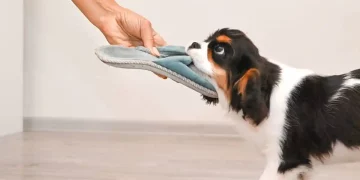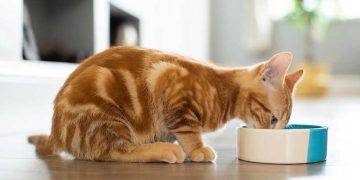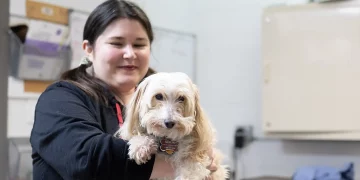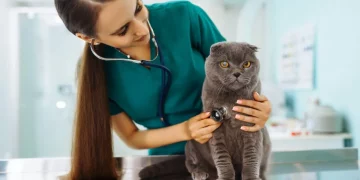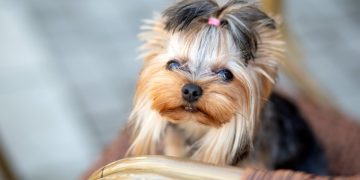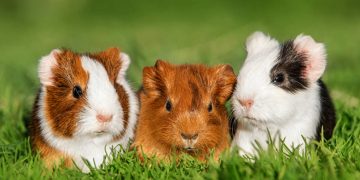Dutch Lop rabbits are one of the most popular rabbit breeds due to their friendly nature, unique appearance, and playful personalities. If you’re considering adopting a Dutch Lop rabbit, it’s crucial to understand their specific care needs and characteristics to ensure a happy and healthy life for your pet. This comprehensive guide will walk you through everything you need to know about Dutch Lop rabbits, from their history and physical traits to their grooming, feeding, and training needs.
1. Introduction: Understanding the Dutch Lop Rabbit
Dutch Lop rabbits, with their distinctive “lop” ears and sweet, sociable nature, make wonderful companions. Their charming personalities and playful behaviors make them a favorite among rabbit owners. However, despite their cute appearance, Dutch Lops require proper care, attention, and understanding to thrive as pets.
1.1. Overview of the Dutch Lop Rabbit
Dutch Lop rabbits are recognized by their compact bodies, short heads, and large, floppy ears, which give them a distinctive appearance. They are known for their friendly, affectionate nature, and they typically enjoy being around people, making them excellent family pets. With proper care and socialization, Dutch Lops can form strong bonds with their owners and exhibit fun, curious behaviors.
2. History and Origin of the Dutch Lop Rabbit
2.1. The Creation of the Dutch Lop
The Dutch Lop rabbit originated in the Netherlands in the early 20th century. The breed was created by crossbreeding the Dutch rabbit, known for its small, compact body, with various lop breeds. The intention was to combine the Dutch rabbit’s friendly nature with the unique characteristics of lop ears. The result was the Dutch Lop, a rabbit with a distinctive body structure and large floppy ears.
- Early Development: The breed was initially created in the Netherlands around 1950. The goal was to develop a breed with a more compact, friendly nature, while also possessing the lop ears characteristic of other lop breeds.
- Recognition: The Dutch Lop was officially recognized by various rabbit associations, including the American Rabbit Breeders Association (ARBA), and quickly gained popularity in both Europe and North America.
3. Physical Characteristics of Dutch Lop Rabbits
3.1. Size and Body Type
Dutch Lop rabbits have a compact, muscular build, which is one of their most distinguishing features. They are classified as medium-sized rabbits, with both males and females weighing between 3.5 to 5.5 pounds (1.6 to 2.5 kg) on average.
- Body Shape: Dutch Lops have a rounded, well-proportioned body with a thick, dense fur coat. They possess a sturdy frame with strong legs and a deep chest.
- Ears: One of the most distinctive characteristics of the Dutch Lop is its large, floppy ears, which hang down on either side of their head. The ears are soft and cover a significant portion of the rabbit’s face.
3.2. Coat Color and Texture
Dutch Lop rabbits come in a variety of colors and coat patterns. The most common colors include:
- Solid Colors: Black, blue, chocolate, lilac, orange, and white.
- Broken Patterns: These patterns combine patches of color with white fur, often resembling a piebald or calico look.
The coat is short and dense, making grooming relatively easy compared to longer-haired breeds. Regular brushing will help to prevent hairballs and keep their fur clean and healthy.
3.3. Lifespan and General Health
On average, Dutch Lop rabbits have a lifespan of 7 to 10 years, although some can live longer with excellent care. Their health largely depends on proper nutrition, exercise, and regular veterinary checkups.
- Health Considerations: Dutch Lops are generally healthy but are prone to a few specific health issues, including obesity and ear problems due to their floppy ears. Proper care can help mitigate these risks.
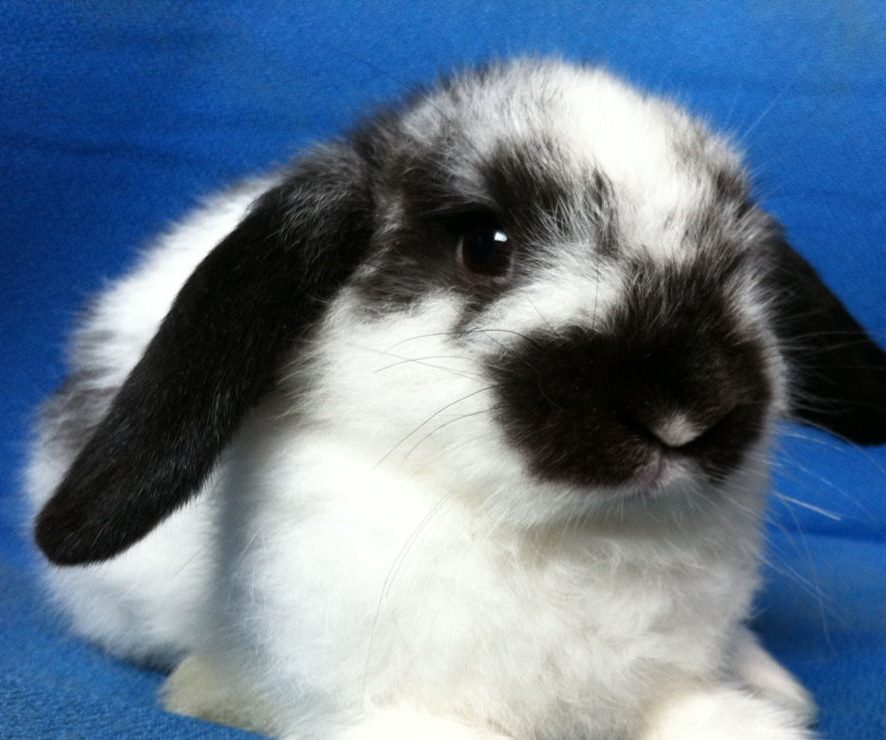
4. Personality and Temperament of Dutch Lop Rabbits
4.1. Friendly and Affectionate Nature
Dutch Lop rabbits are known for their friendly and social temperament. They tend to enjoy human interaction and can be very affectionate. Many owners describe them as “lap bunnies” because they like being held or sitting close to their human companions.
- Social Interaction: Dutch Lops are naturally curious and tend to seek attention from their owners. They thrive in environments where they receive lots of love, playtime, and positive reinforcement.
- Playful Behavior: These rabbits are playful and enjoy exploring their environment. They are quick learners and may even enjoy interactive toys, such as tunnels, balls, or food puzzles.
- Compatibility with Children: Dutch Lop rabbits are usually good with children, provided they are handled gently and taught how to interact with the rabbit safely.
4.2. Potential Behavior Issues
While Dutch Lop rabbits are generally well-mannered, there are some behavior issues that may arise if they are not properly trained or socialized:
- Chewing: Like most rabbits, Dutch Lops have a natural urge to chew on things. If not given appropriate chew toys, they may turn to furniture, electrical cords, or other household items.
- Digging: Rabbits are natural diggers, and Dutch Lops are no exception. Providing them with an appropriate digging area can help prevent them from damaging their living space.
- Aggression: Although rare, some Dutch Lop rabbits may become territorial, particularly if they feel threatened or cornered. Proper training and socialization can help prevent aggressive behaviors.
5. Housing and Environment for Dutch Lop Rabbits
5.1. Indoor vs. Outdoor Housing
While some rabbit breeds can live happily outdoors, Dutch Lop rabbits are best suited for indoor living. Their floppy ears make them more susceptible to ear infections from damp or cold environments.
- Indoor Housing: A spacious indoor cage or pen is ideal for a Dutch Lop rabbit. They should have enough space to move around, stretch, and exercise. Ensure the environment is free from loud noises and stressful stimuli.
- Outdoor Housing: If you live in a region with a mild climate, you may consider an outdoor hutch. However, always ensure that the hutch is well-protected from extreme weather, predators, and damp conditions. Dutch Lops are not particularly suited to living outdoors during the colder months.
5.2. Litter Training and Hygiene
Litter training is relatively easy for Dutch Lop rabbits, as they are naturally inclined to use a designated area for their waste.
- Litter Box Setup: Place a litter box in a corner of the rabbit’s pen or cage. Use non-clumping, rabbit-safe litter and clean the box regularly to avoid unpleasant odors.
- Cleaning: Regularly clean your rabbit’s living area to prevent the buildup of waste, which could lead to health issues or discomfort.
5.3. Exercise and Space
Dutch Lop rabbits are active animals and require plenty of space to run, jump, and explore. An exercise pen or a rabbit-proofed room is ideal for giving your pet enough freedom.
- Exercise Time: Aim to give your Dutch Lop rabbit at least 3–4 hours of supervised exercise outside of their cage each day. This helps them maintain a healthy weight and engage in natural behaviors like hopping and exploring.
- Toys and Enrichment: Providing toys, tunnels, and safe chewing objects is essential to prevent boredom. Interactive toys that dispense treats can also keep them mentally stimulated.
6. Feeding and Diet for Dutch Lop Rabbits
6.1. Basic Nutritional Requirements
Like all rabbits, Dutch Lops need a balanced diet that includes hay, fresh vegetables, and high-quality rabbit pellets. A proper diet is essential for their health, digestion, and overall well-being.
- Hay: Hay should make up about 70–80% of a Dutch Lop’s diet. High-quality grass hays like Timothy hay or Meadow hay provide the fiber needed for healthy digestion and prevent obesity.
- Fresh Vegetables: Provide a variety of leafy greens like romaine lettuce, parsley, and cilantro. Avoid high-oxalate vegetables like spinach or kale, as they can lead to kidney problems over time.
- Pellets: High-quality pellets should be supplemented with hay and vegetables. Look for pellets that contain at least 18% fiber and do not contain added sugars or artificial colors.
- Fruits: Fruits should be given sparingly due to their high sugar content. Small pieces of apple, banana, or berries are occasional treats that are safe for rabbits in moderation.
6.2. Water and Hydration
Always ensure your Dutch Lop rabbit has access to fresh water at all times. Use a water bottle with a sipper tube or a shallow bowl to prevent spillage and contamination.
7. Grooming and Coat Care for Dutch Lop Rabbits
7.1. Regular Brushing
While Dutch Lop rabbits have short coats, they still require regular grooming to maintain their health and appearance.
- Brushing Frequency: Brush your rabbit 2–3 times a week to remove loose fur and prevent hairballs. Use a soft-bristle brush or a grooming mitt for this task.
- Shedding Seasons: During shedding seasons (spring and fall), your Dutch Lop may shed more heavily. Be sure to brush more frequently to help manage this.
7.2. Ear Care
Dutch Lop rabbits are prone to ear infections due to their floppy ears. Regular ear care is essential to keep them clean and free from infections.
- Ear Inspections: Check your rabbit’s ears weekly for signs of dirt, wax buildup, or redness. If the ears look dirty, gently clean them using a damp cotton ball or ear wipe made for rabbits.
- Signs of Infection: If you notice any signs of infection, such as a strong odor, excessive scratching, or discharge, consult a veterinarian immediately.
8. Common Health Issues in Dutch Lop Rabbits
8.1. Obesity
Dutch Lops are prone to obesity if their diet is not carefully controlled. Ensure they have a balanced diet and plenty of exercise to maintain a healthy weight.
- Prevention: Limit sugary treats and monitor the portion sizes of pellets and vegetables.
- Symptoms: Overweight rabbits may have difficulty moving, and their fur may appear matted or greasy.
8.2. Ear Infections
Due to their floppy ears, Dutch Lops are more susceptible to ear infections caused by moisture, dirt, or bacteria.
- Prevention: Keep their ears clean and dry. If you notice any redness, swelling, or discharge, consult a vet immediately.
8.3. Respiratory Issues
Rabbits, including Dutch Lops, are prone to respiratory infections, particularly if they live in damp or unclean environments.
- Prevention: Maintain a clean and dry living space. Ensure proper ventilation and avoid exposure to harmful chemicals like cigarette smoke.
9. Conclusion: The Joys and Responsibilities of Owning a Dutch Lop Rabbit
Dutch Lop rabbits are affectionate, playful, and charming pets that make wonderful companions. However, they do require specific care, including proper diet, grooming, and regular vet check-ups. By understanding their needs and providing a safe, stimulating environment, you can ensure that your Dutch Lop rabbit enjoys a happy and healthy life as part of your family. Whether you’re new to rabbit ownership or an experienced pet parent, the Dutch Lop offers a delightful addition to any home.


